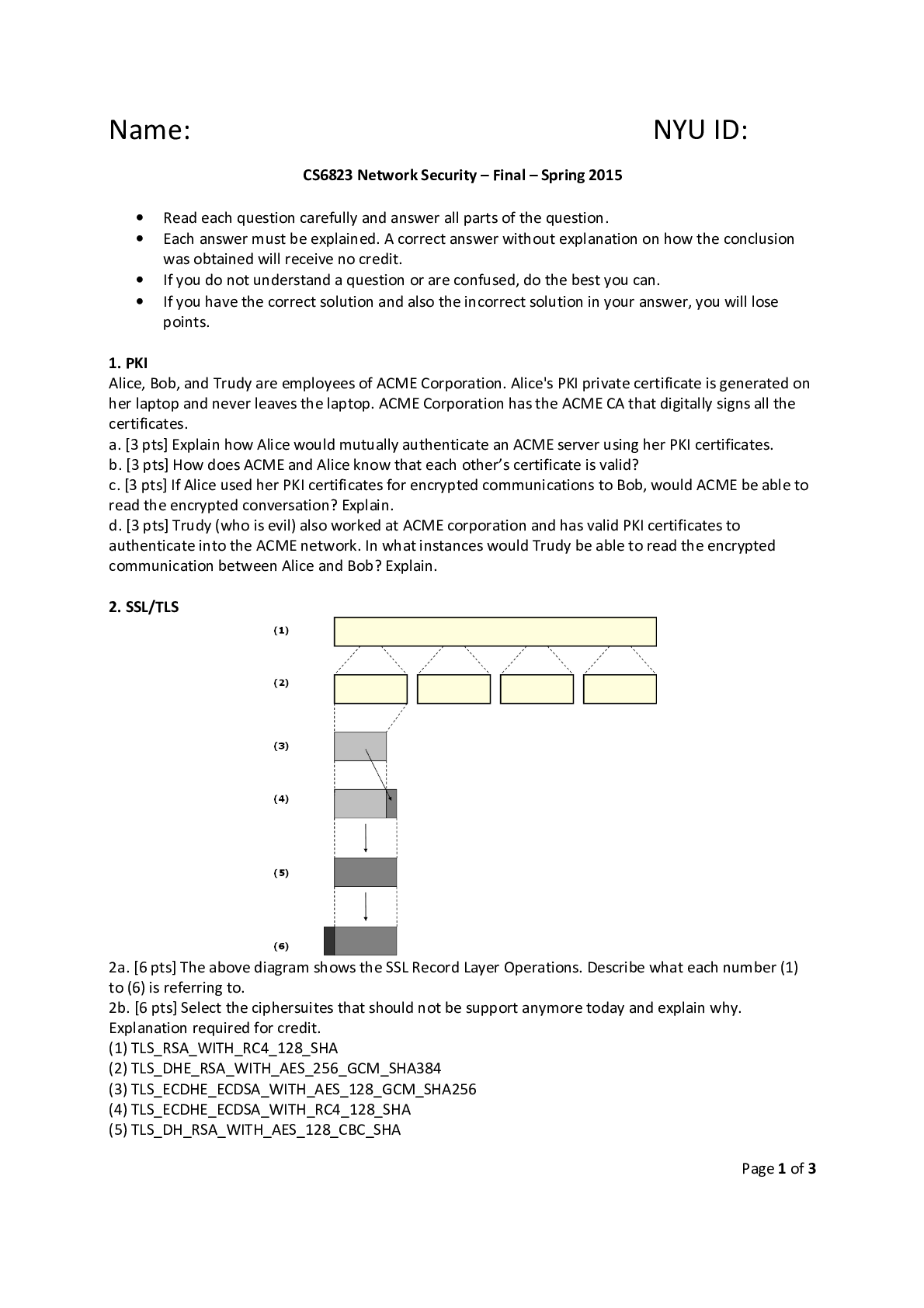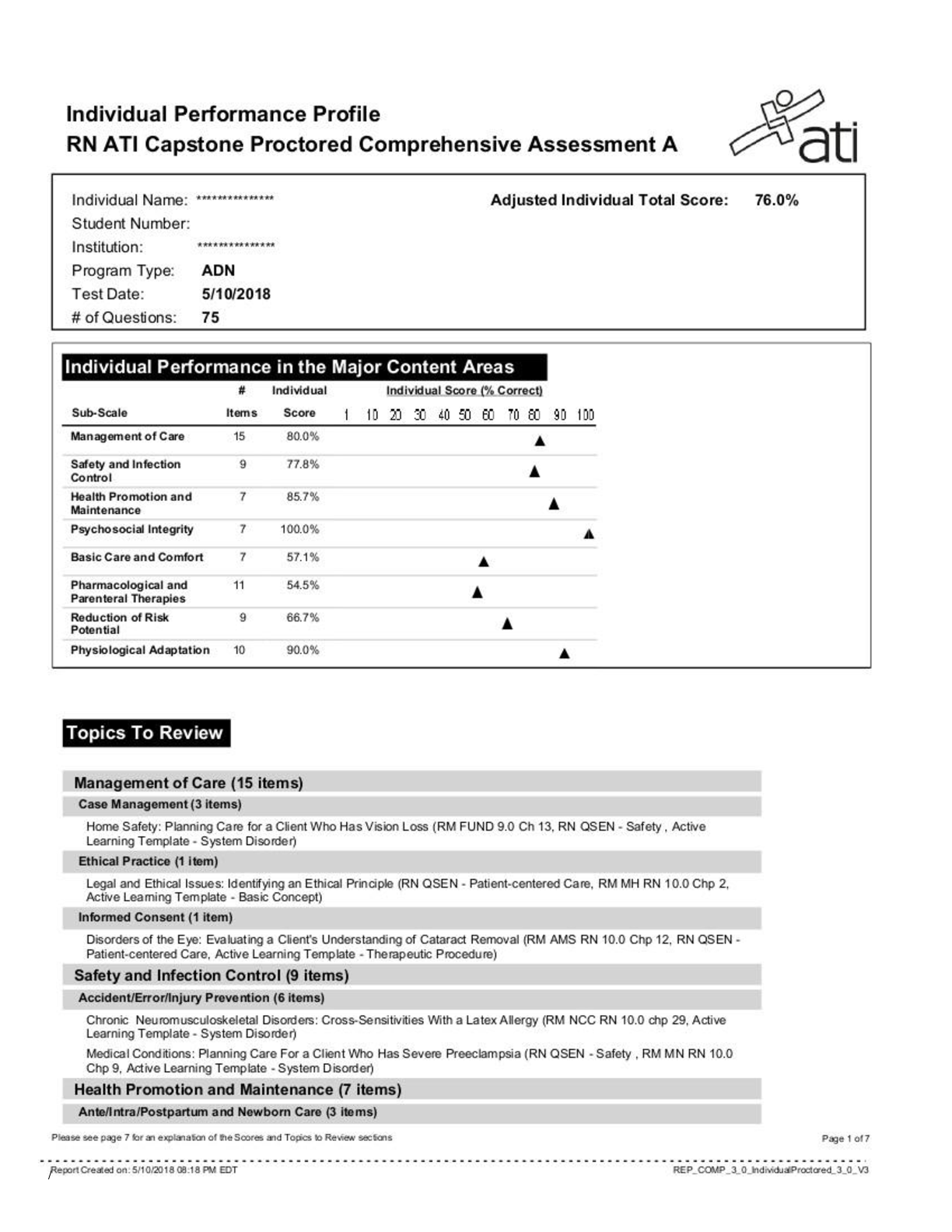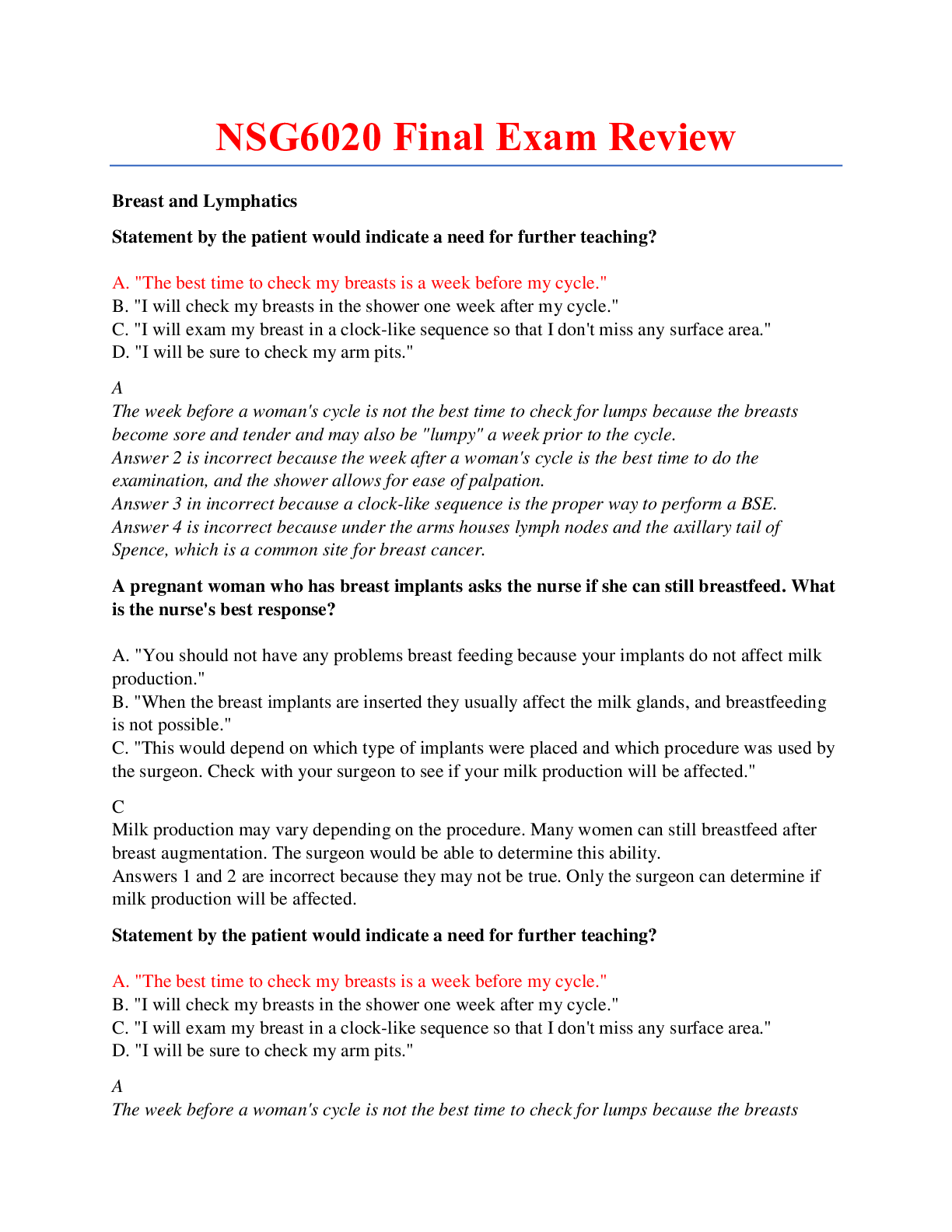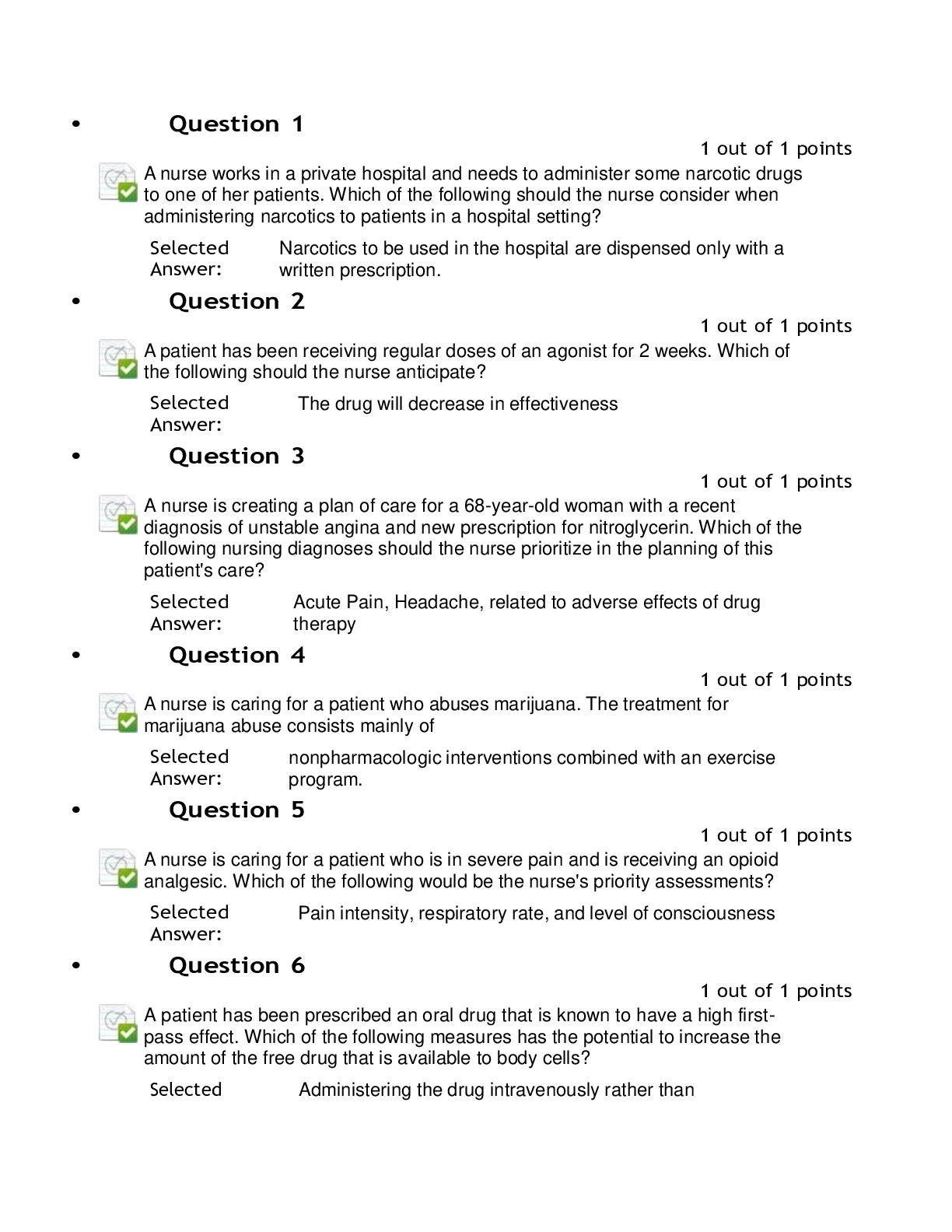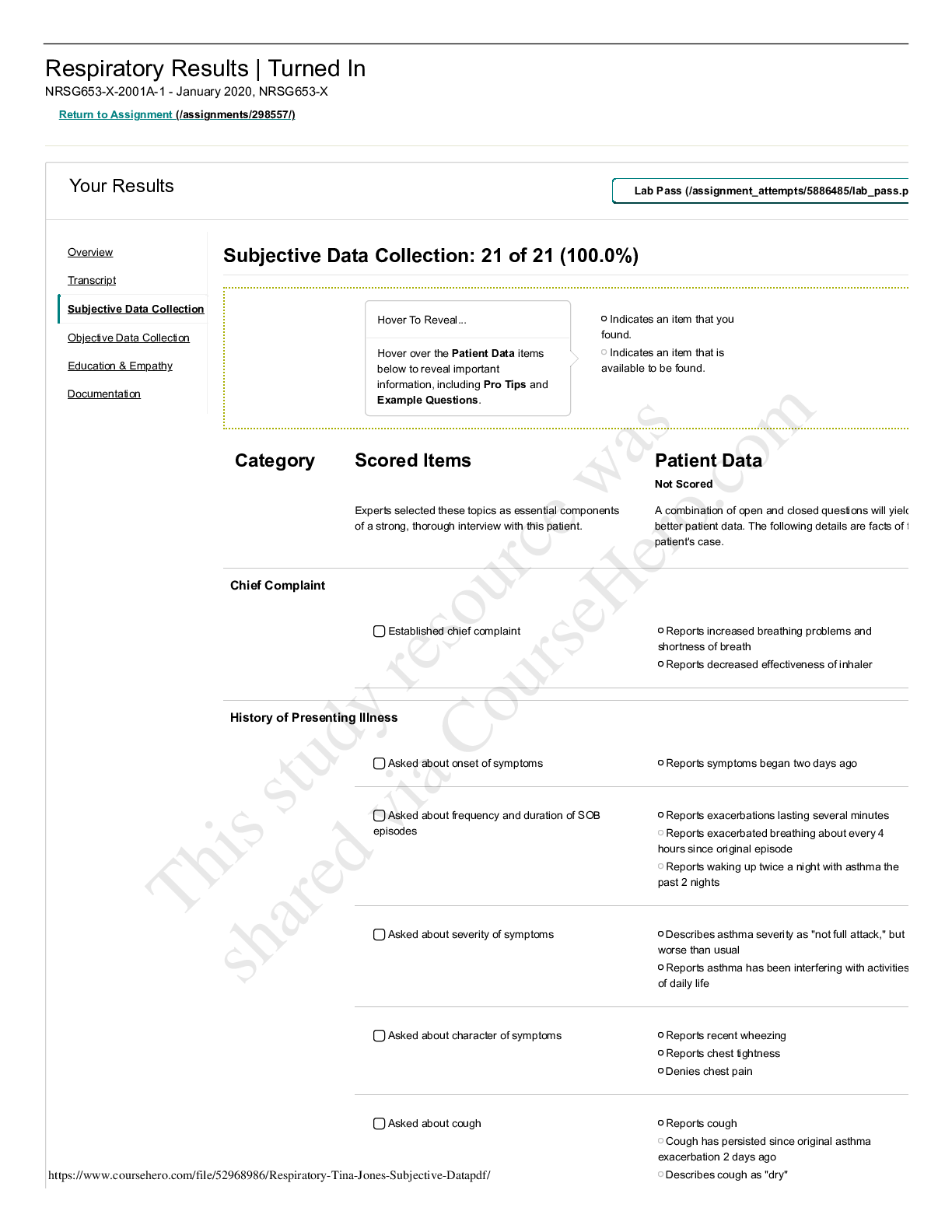Biology > EXAM > Questions and Answers > UBC Biology 121 Worksheet 6 TOPIC: READING PHYLOGENETICS TREES (All)
Questions and Answers > UBC Biology 121 Worksheet 6 TOPIC: READING PHYLOGENETICS TREES
Document Content and Description Below
University of British Columbia BIOL 121 UBC Biology 121 Worksheet 6 TOPIC: READING PHYLOGENETICS TREES UBC Biology 121 1 1. Consider the phylogenetic tree shown below. Nodes are labeled with numb... ers (1 – 13) above each node. You can refer to monophyletic groups (clades) by their ancestral nodes in your answers. a) Is the group composed only of Fungi and Fonticula monophyletic? Justify your answer. b) Identify a monophyletic group of your choice that includes choanoflagellates. List all of the members of this group and the node of the common ancestor. c) Which node represents the most recent common ancestor of land plants and animals? d) Assume that multicellularity can be gained but not lost. According to this tree, how many times has multicellularity evolved within eukaryotes? 7 On the tree, mark all branches where multicellularity arose with a star. Worksheet 6 TOPIC: READING PHYLOGENETICS TREES 2 e) A new species is discovered that has an insertion in the EF1a gene and a single flagellum. This new species is multicellular, but does not have collagen or extracellular matrix. What lineage or clade might this new species belong to? Justify your answer. f) i. Do shelled amoebae have a nucleus? Why or why not? ii. Do archaea have organelles? Why or why not? g) Based only on this phylogenetic tree, is it accurate to say that Capsaspora are more primitive than Animals? Explain your answer. h) A lot of basic research in molecular and cell biology is performed on yeast (a fungus), and the results are typically applicable to mammalian cells. Bacteria such as E. coli are cheaper and easier to culture that yeast, and their biology is extremely well known (more is known about E. coli than any other organism in the world). Yet, yeast is a much better model organism for understanding animal biology. What is a likely reason for this? 2. Which of the trees represented below show the same phylogenetic relationships as each other? Briefly justify your answer. 3 3. The two trees at right represent two hypotheses about the evolutionary relationships within animals. Does one or more hypothesis suggest that sponges are more closely related to cnidarians than to comb jellies? Justify your answer. [Show More]
Last updated: 1 year ago
Preview 1 out of 3 pages
Instant download

Buy this document to get the full access instantly
Instant Download Access after purchase
Add to cartInstant download
Reviews( 0 )
Document information
Connected school, study & course
About the document
Uploaded On
Aug 02, 2022
Number of pages
3
Written in
Additional information
This document has been written for:
Uploaded
Aug 02, 2022
Downloads
0
Views
34

